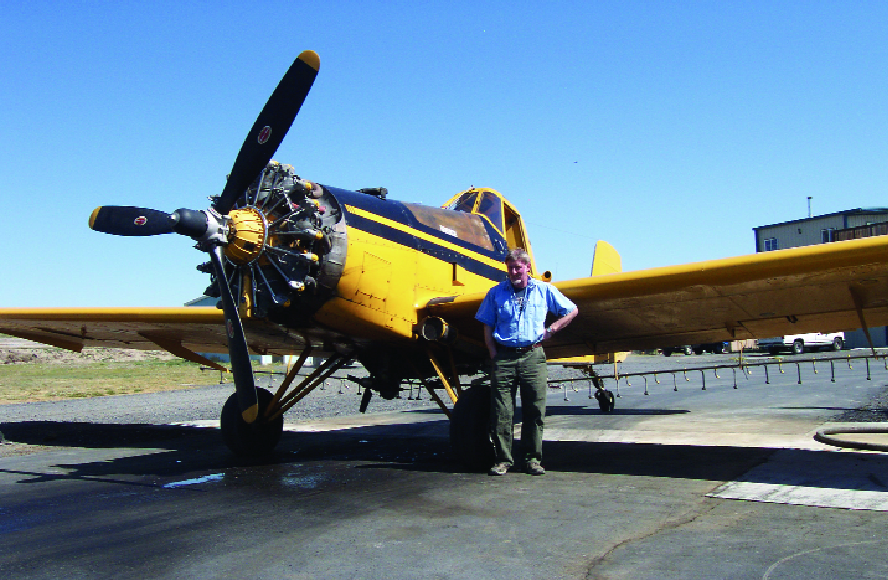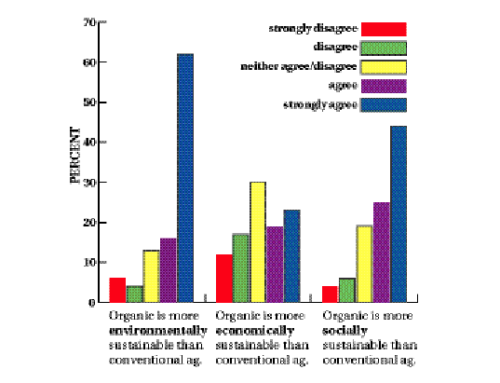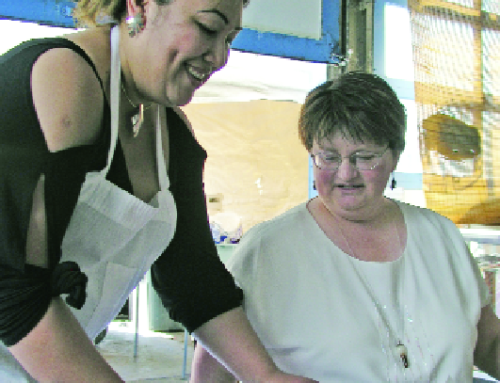
Photo by Bill Reinert
As more Washington fruit growers expand their acreage in the Columbia Basin and convert from large, three-dimensional trees to two-dimensional, trellised systems, pilot Guy “Jock” Warren believes the time is ripe to expand agricultural aviation.
“As orchards get bigger and trees get smaller, aerial spraying makes sense,” said Warren, who started Royal Flying Service, Inc., in Royal City, Washington, 20 years ago.
Most of his existing business consists of spraying ground crops such as wheat and peas, but Warren is trying to expand his orchard business.
While touting the benefits of applying fungicides, herbicides, mouse bait, and stop-drop sprays from the air, Warren notes that aerial applications remain a hard sell for most orchard owners and managers. Many larger Columbia Basin orchards are using aerial applications, but tree fruit growers remain a scant 5 percent of the crops the pilot sprays each year.
However, Warren includes at least ten fruit growers among his clients. “We’ve been trying to do more orchard work every year,” he said. “It’s a real stumbling block, because growers have some misperceptions.
“Fieldmen and orchard managers have in their minds that you have to apply 300 to 400 gallons per acre,” he said. “Back in the old days, they had bigger trees with denser canopies, and they probably needed that kind of coverage.”
Warren said he can spray 10 to 15 gallons of chemicals per acre at a rate of 80 to 100 acres per hour using his propeller aircraft. The chemicals are applied with large-capacity rotary nozzles that are adjustable to provide variable droplet sizes.
Flow controls and precisely calibrated spray equipment make delivery very accurate, he said. “We always tell everybody that it’s not the water, it’s the amount of the chemical that hits the target that counts.” He added that wind stirred by the plane, which he flies from 5 to 28 feet above the canopies at 125 miles per hour, agitates the foliage to provide thorough penetration.
Warren uses global positioning satellite (GPS) technology to target his clients’ blocks. Programming the target grid into a computerized black box mounted a few feet in front of the cockpit, he and his pilots track their progress via a digital display on the box.
That’s a big improvement over the old days, he said with a smile. “We used to have guys out there with flags,” he said. “Then we positioned paper flags to mark target crops. The Pacific Northwest is one of the last places to adopt GPS.”
Specific purposes
Orchard managers find aerial spraying useful for specific purposes. Mike Robinson of Stemilt Management, which owns approximately 150 acres of apple orchards on the Royal Slope, said he’s used aerial spraying for 25 years, primarily for dropping granular mouse bait in late fall.
“At that time of year, you’re looking for weather windows,” Robinson said. “If you can get somebody in there to do it quick, that works out well.” He added, however, that having its own ground-spraying equipment gives Stemilt less reason to use aerial spraying. “There are times and places where aerial fits. If it fits my schedule I’ll use it, but it’s not my primary means of spraying.”
Robinson said that depending on the chemical and the concentration required, he applies anywhere from 50 to 300 gallons of chemicals per acre. Cliff Weed, compliance program manager of the state Department of Agriculture’s Pesticide Management Division, said mouse bait is one of the most common and advantageous uses of aerial spraying for fruit trees.
“You can control where granular particles are going much better than you can with liquid spray,” Weed said. He added that certain orchard systems and crops lend themselves more to being treated from the air. “Cherries need to have zero percent fruit flies,” he said. “A lot of cherries are treated by helicopter.
“It’s somewhat more difficult to treat trees in residential areas [from the air], but using air-blast spraying from the ground can also be challenging.” Weed said aerial sprayers “get better coverage penetration in a [trellised] type of situation than in large trees with thick canopies, which makes it harder to get that lower foliage.”
Equipment
For those with little equipment, aerial spraying can make better economic sense. Gary Potter manages 650 acres of apples for B&G Orchards, located about ten miles west of Royal City. Because B&G is only a few years old, the company has little equipment, and decided to use Warren’s services extensively this year, Potter said. “On most of the chemicals, there’s no reason you can’t use an airplane. We’re timing it and using around the wind. We’re looking at it for quite a few applications.”
Without the aerial applications, they would need 13 sprayers to cover all the acreage, he said. “That’s an awful lot of sprayers and an awful lot of tractors.” Potter is farming free-standing trees about five years old, with small canopies. When they get bigger, he might have to consider ground spraying, he said. “When you really need to get good coverage, we spray on the ground. For some insects, you really need to get good coverage all over the tree.” Potter said he figured the costs of aerial versus ground spraying would be about the same.
Weed said that because aerial spraying is so much faster than ground spraying, cost comparisons are difficult. Factors that affect cost include acreage covered, terrain, and the costs of labor and fuel. Warren said he charges growers from about $6 to $8 an acre, depending on the amount of chemicals applied.
Closely regulated Warren is careful to note that the ag aviation industry is regulated by agencies including the federal Environmental Protection Agency, Occupational Safety and Health Administration, and state departments of agriculture, ecology, and environment. The National Agricultural Aviation Association is developing the professional Aerial Applicators Support System, devoted to flight safety and minimizing off-target chemical drift.
Weed said, “Agricultural pilots have to be licensed and show a level of knowledge about how to apply pesticides. They also take continuing education courses to keep their licenses current; they also have to carry liability insurance to cover accidents.” Warren said most common pesticides are labeled for aerial application, and that he checks them carefully to be sure.
He said also that state law requires pilots to equip their planes with smokers to settle down honeybees crucial to pollinating the fruit trees. For more information, contact the National Agricultural Aviation Association at (202) 546-5722, or check the website at www.agaviation.org.
—by Bill Reinert




Leave A Comment